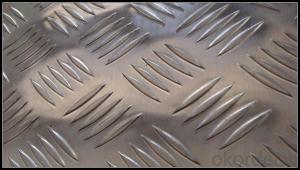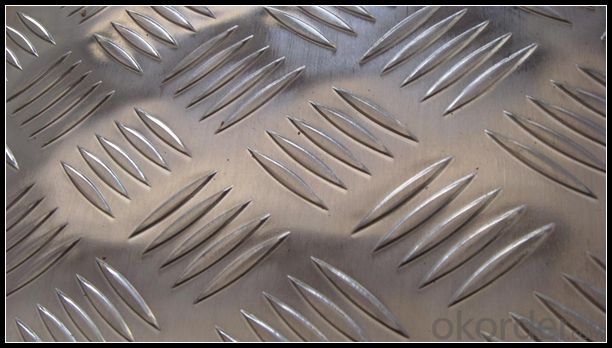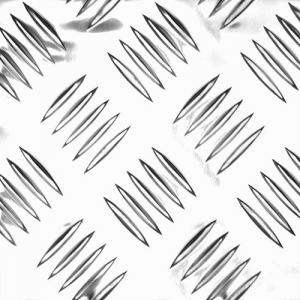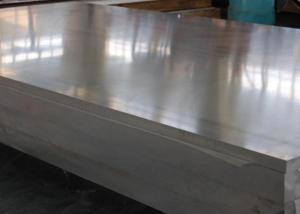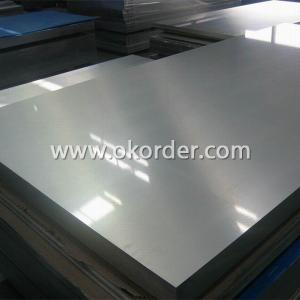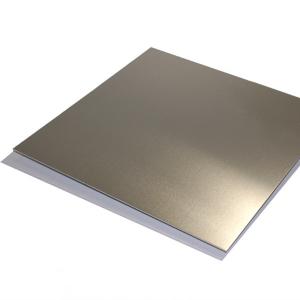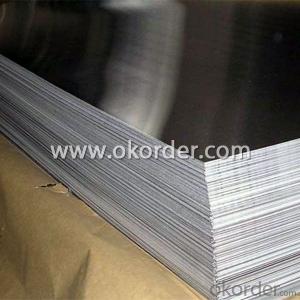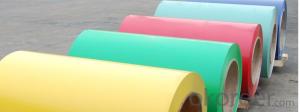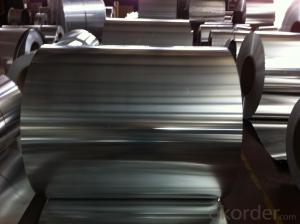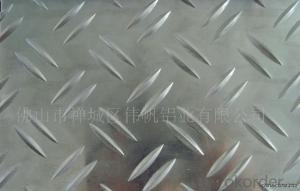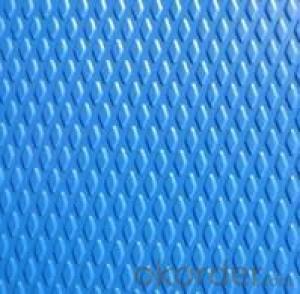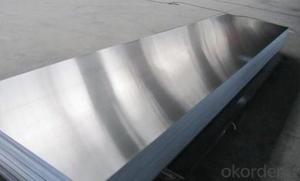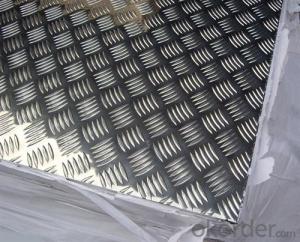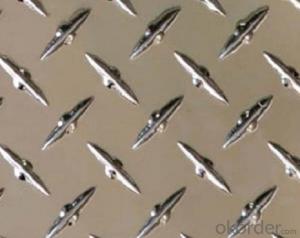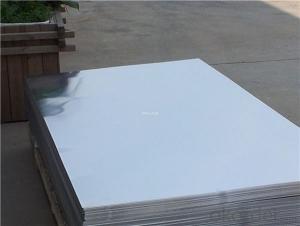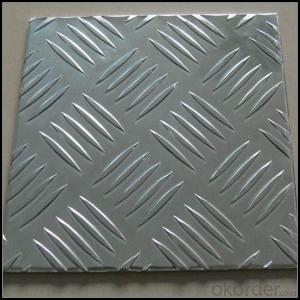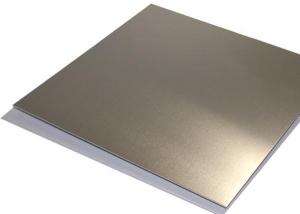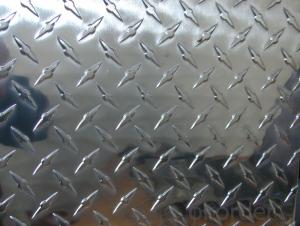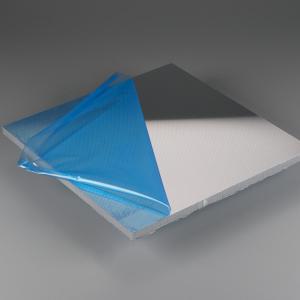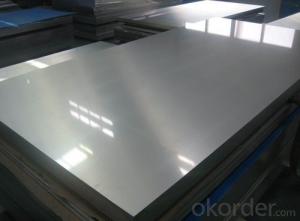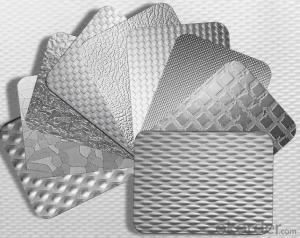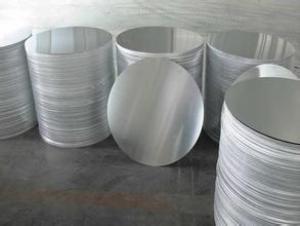Home Depot Checkered Treadplate Aluminium Panel 3003 H22 Sheets of Aluminum
- Loading Port:
- Shanghai
- Payment Terms:
- TT OR LC
- Min Order Qty:
- 5 m.t.
- Supply Capability:
- 10000 m.t./month
OKorder Service Pledge
OKorder Financial Service
You Might Also Like
Specification
1. Specification of Checkered Treadplate Aluminium Panel 3003 H22
Alloy Number | AA1XXX,AA3XXX,AA5XXX |
Temper | H12, H14, H16, H18, H22, H24, H26, H32, HO, F |
Thickness | 0.1mm – 500mm |
Width | 10mm- 2200mm |
Standard | GB/T3880-2006, ASTM, ISO, EU standard |
2. Application of Checkered Treadplate Aluminium Panel 3003 H22
Transfporation, vehicle, antiskid plate,toolbox,canopy body,
3. Feature of Checkered Treadplate Aluminium Panel 3003 H22
Surfact Quality :
Be free from Oil Stain, Dent, Inclusion, Scratches, Stain, Oxide Dicoloration, Breaks, Corrosion, Roll Marks, Dirt Streaks and other defect which will interfere with use,
Mechenical Property:
Chemical Composite and Mechanical Property
4. Certificate:
SGS and ROHS(if client request, paid by client), MTC(plant provided), Certificate of Origin(FORM A, FORM E, CO), Bureau Veritas and SGS (if client request, paid by client), CIQS certificate
5. Image of Five Bar Treadplate Aluminium Panel 3003 H22 for Tool Box
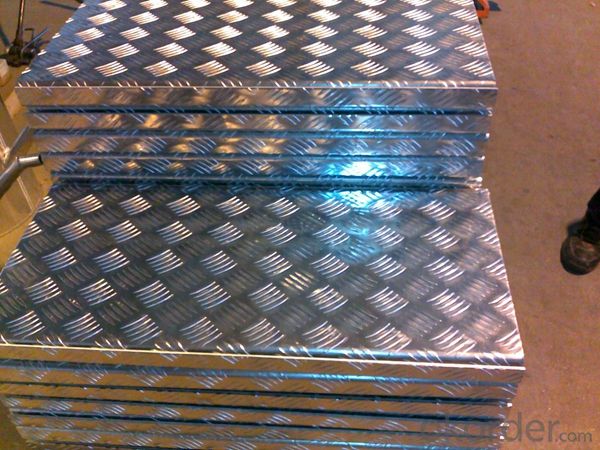
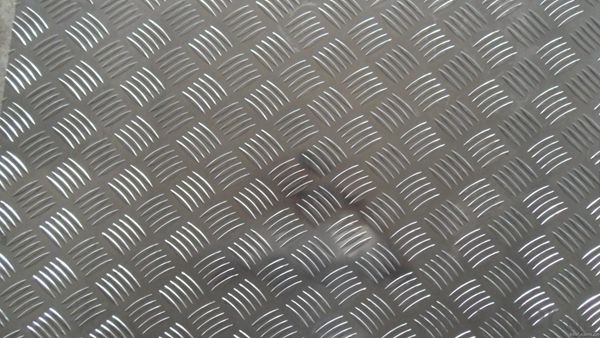
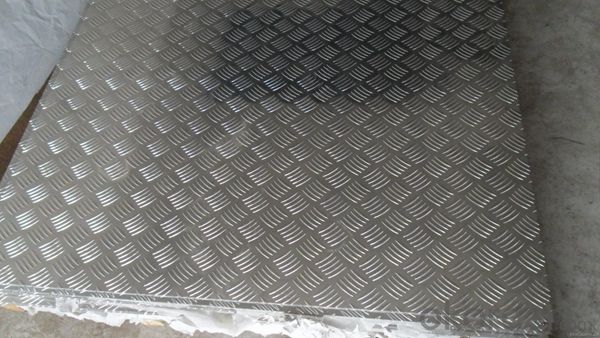
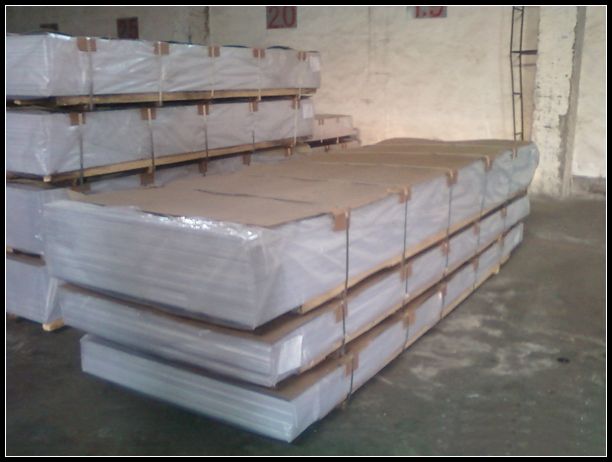
6. Package and shipping of Checkered Treadplate Aluminium Panel 3003 H22
First, plastic cloth with drying agent inside; Second, Pearl Wool ; Third, wooden cases with dry agent , fumigation wooden pallets, aluminum surface could cover blue PVC film
7. FAQ
1) What is the delivery time?
Dpends on actual order, around 20 to 35 days
2)What is the QC system:
We have QC staff of 20 persons and advanced equipment, each production is with MTC traced from Aluminum ingot lot.
3) What market do you mainly sell to?
Australia, America, Asia, Middle East, Western Europe, Africa etc
- Q: Can aluminum sheets be used for furniture manufacturing?
- Yes, aluminum sheets can be used for furniture manufacturing. Aluminum is a lightweight, durable, and corrosion-resistant material, making it suitable for various furniture applications such as tables, chairs, cabinets, and shelves. Its versatility allows for different designs and finishes, making it a popular choice in modern and contemporary furniture styles. Additionally, aluminum's recyclability makes it an environmentally friendly option in the furniture industry.
- Q: Normally, when I install a 30-amp dryer receptacle, the wire is #10 copper and I double over the end with lineman's pliers prior to landing it in the lug just to be extra tight. Today I replaced a dryer outlet wired with #8 aluminum SE. The quandaray I have is that the lugs seem made for #6 and the #8 just sort of flattens and divides under the screw. Is this safe? The doubling over move makes the wire way too thick for the lugs to close. I've been doing electric for many years and have never run into this. Should I go back and re-run the circuit (only about 30 feet) in #10 copper? What is the actual draw of a typical electric dryer on high heat, anyway? Thanks.
- Run 30 feet of 10-3 with ground or take a chance of heating up the dryer's receptacle? HM MM! I sure wouldn't have a problem making this decision. If you decide to leave the aluminum wire, at least put some NOLOX on it.
- Q: write a balanced equation for the reaction between aluminium metal and potassium hydroxide in water
- So convert 27,8 g iron to moles, and convert that to a mass of aluminium 2. 3 CuNO3 + Fe3+ -- Fe(NO3)3 + 3 Cu+ 3. 2 Fe3+ + 3 O2- --- Fe2O3 So convert Fe2O3 from 20,8 grams to moles. Multiply this answer by two. Convert to a mass of Fe3+ 4. H2SO4 + 2 KOH -- K2SO4 + 2 H2O again, 150 grams of H2SO4 to moles, then convert that amount to an amount of mass of K2SO4 5. Na2CO3 + 2 H3O+ + Cl- --- CO2 + 3 H2O + NaCl
- Q: Can aluminum sheets be used for HVAC ductwork?
- Yes, aluminum sheets can be used for HVAC ductwork. Aluminum is a popular choice for ductwork due to its lightweight, corrosion-resistant, and durable properties. It is also easy to fabricate and install, making it suitable for various HVAC applications.
- Q: How much is the aluminum plate with a thick 2mm 1000*2000? Thanks
- Aluminum sheet refers to the rectangular plate made of aluminium ingot rolled and divided into pure aluminum plate, alloy aluminum plate, thin aluminum plate, middle thick aluminum plate and pattern aluminum plate.
- Q: Are aluminum sheets suitable for cryogenic applications?
- Indeed, cryogenic applications can benefit from the use of aluminum sheets. This is due to the fact that aluminum possesses remarkable thermal conductivity and exhibits low thermal expansion. Consequently, it can endure extremely low temperatures while retaining its structural integrity. Moreover, aluminum's low density and lightweight nature render it an advantageous choice for cryogenic applications that prioritize weight reduction. Additionally, aluminum demonstrates commendable resistance to corrosion, thereby amplifying its appropriateness for cryogenic environments. All in all, aluminum sheets stand as a dependable and cost-effective alternative for a multitude of cryogenic applications, including aerospace, cryogenic storage tanks, and cryogenic research facilities.
- Q: Are aluminum sheets suitable for outdoor applications?
- Aluminum sheets are a great choice for outdoor applications. They are durable and resistant to corrosion, which makes them perfect for outdoor environments. They can withstand different weather conditions like rain, snow, and sunlight without getting damaged or losing their strength. Furthermore, aluminum sheets can be coated or painted to make them more resistant to fading, scratching, and other types of wear and tear. This makes them suitable for various outdoor projects like roofing, siding, signage, and decorative elements. Additionally, aluminum is lightweight and easy to shape, making installation and customization a breeze. In summary, aluminum sheets are a dependable and long-lasting option for outdoor projects.
- Q: What are the different methods of surface protection for aluminum sheets?
- Aluminum sheets can be protected in various ways to ensure their longevity and functionality. Anodizing is a widely used technique, involving the creation of a protective oxide layer on the aluminum surface. This is achieved by immersing the sheets in an electrolyte solution and passing an electric current through them. The outcome is a resilient and corrosion-resistant layer that can be further enhanced with different dyes and sealants. Another option is powder coating, which entails applying a dry powder onto the aluminum sheets and then curing it with heat. This results in a robust coating that offers excellent defense against scratches, chemicals, and weathering. Powder coating is available in a wide array of colors and finishes, making it a popular choice for decorative purposes. Chemical conversion coating is yet another alternative, involving the treatment of aluminum sheets with a chemical solution to convert the surface into a protective layer. This coating not only improves corrosion resistance but also provides a suitable base for paint or other coatings. Painting is a commonly utilized method for safeguarding aluminum sheets. Different types of paints, such as epoxy, acrylic, and polyurethane-based coatings, can be applied to the surface. These paints not only shield against corrosion and environmental factors but also offer the opportunity for aesthetic customization. Lastly, laminating is a technique where a protective film is applied to the surface of the aluminum sheets. These films can be made from various materials like PVC, polyester, or polyethylene. Laminating adds an extra layer of protection against scratches, abrasion, and UV radiation. Each method of surface protection for aluminum sheets has its own merits and considerations, which depend on the specific requirements of the application. It is crucial to thoroughly assess the desired level of protection, aesthetic preferences, and budget constraints before selecting the most suitable method.
- Q: Describe the process of selecting an appropriate color for an exterior wall made from aluminum sheets.
- <p>Choosing a suitable color for an exterior wall made of aluminum sheets involves considering several factors. First, think about the architectural style and the existing color scheme of the building. Neutral colors like white, gray, or beige are versatile and can complement most designs. Consider the local climate; lighter colors reflect heat and are suitable for hot climates, while darker colors can absorb heat, making them ideal for cooler regions. Factor in the environment and surroundings; colors that blend with the natural landscape can create a harmonious look. Additionally, consider the maintenance and durability of the color, as some may fade or show dirt more easily. Finally, consult with an architect or designer for professional advice tailored to your specific project.</p>
- Q: Are aluminum sheets suitable for bulletproof applications?
- Aluminum sheets have not typically been deemed appropriate for bulletproof applications because they are relatively weak and less dense compared to other commonly used bulletproof materials, such as steel or ballistic ceramics. Despite having good corrosion resistance and a high strength-to-weight ratio, aluminum lacks the necessary hardness and toughness to effectively halt or slow down bullets. In contrast, materials like steel or ballistic ceramics possess superior properties that allow them to withstand the impact of ballistic projectiles. For instance, steel has both high hardness and strength, enabling it to absorb and disperse the energy from a bullet upon impact. On the other hand, ceramic materials have high compressive strength and hardness, causing them to shatter and absorb the energy of a bullet, thereby preventing penetration. In summary, while aluminum sheets may have various uses due to their resistance to corrosion and lightweight nature, they are generally unsuitable for bulletproof purposes. To achieve effective protection against ballistic threats, it is advisable to consider materials specifically designed and engineered for such purposes, such as steel or ballistic ceramics.
Send your message to us
Home Depot Checkered Treadplate Aluminium Panel 3003 H22 Sheets of Aluminum
- Loading Port:
- Shanghai
- Payment Terms:
- TT OR LC
- Min Order Qty:
- 5 m.t.
- Supply Capability:
- 10000 m.t./month
OKorder Service Pledge
OKorder Financial Service
Similar products
Hot products
Hot Searches
Related keywords
